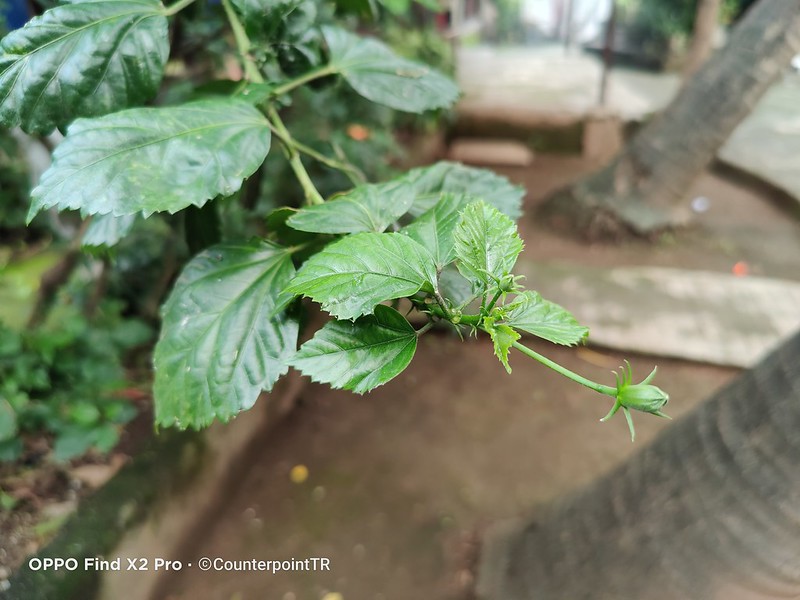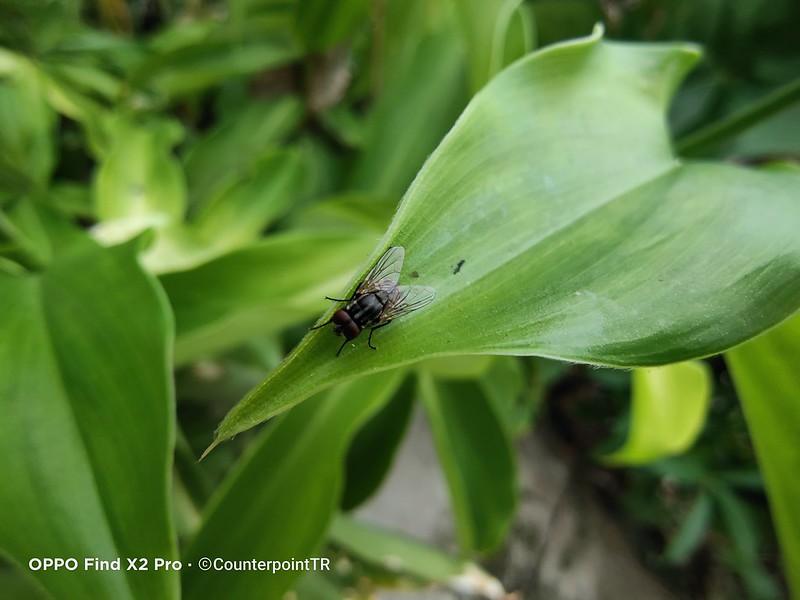The Oppo Find X2 Pro features a 6.7-inch QHD+ display with a 120Hz refresh rate.
The triple rear camera setup offers 10X hybrid zoom and 60X digital zoom.
Equipped with 5G connectivity, it supports both SA and NSA bands.
Back in 2018, when smartphone designs were getting boring and notched displays were becoming common, Oppo launched the Find X offering an immersive full-screen display. To achieve this, Oppo added a motorized sliding mechanism that would pop-up to reveal the cameras. It was a unique implementation that made the Oppo Find X stand apart from the rest. But the smartphone had its set of shortcomings, which the company has tried to address with its successor – the Oppo Find X2 Pro.
Oppo took two years between the launch of the Find X and the Find X2-series, but it has focused on some key areas to make the wait worthwhile. There are two models – the Find X2 and Find X2 Pro, with the difference between them being the camera setup and IPXX rating. I have been using the “Pro” model for over a week now, and I can clearly say that the Find X2 Pro is a contender to fight for the best Android smartphone title for 2020.
Ultra-Premium Segment Gets a Worthy Competitor
Oppo has been in the smartphone industry for close to a decade now, but it has mostly been focusing on affordable and mid-range smartphones. With the Reno-series and Find X, the company entered the premium segment. The Reno-series helped Oppo gain some market share in the premium segment. In Q1 2020, Oppo registered a growth of 67% YoY (from a low base), according to Counterpoint’s Monthly Pulse Service.

With the Find X2-series, Oppo has debuted in the ultra-premium segment. The Find X2 Pro is offered in two SKUs – 256GB and 512GB models, both having 12GB of RAM. With a starting price of $1,200, the smartphone is even more expensive than the Galaxy S20 Ultra 5G. This clearly shows Oppo’s ambitions to compete with the best ones out there.
Commenting on the premium strategy, research analyst Varun Mishra said, “The premium segment is important for OEMs as it contributes to over half of the industry revenue. However, the segment remains consolidated. Over the last few quarters, we have seen Chinese OEMs trying to crack this segment through various strategies like introducing sub-brands, new product lines, or 5G devices. Oppo, with the Find X2 Pro, has launched a 5G-capable premium device with a unique design, stellar camera and a stunning display. With the increasing adoption of 5G and declining demand for Huawei outside China, there is a gap to be filled in the premium segment, especially in markets like Europe. Oppo can leverage this opportunity. The Find X2 Pro also shows Oppo's prowess in the design and innovation stakes, which will also help in gaining mind share-across all markets.”
Steep pricing aside, Oppo has focused on display and camera tech, while also offering future-proof 5G connectivity. The spec sheet sounds good on paper, but does the smartphone deliver on its promise? Can Oppo command such high pricing? Here is what I think after putting it through the paces for over a week.
Beautiful Design with Ceramic Back
Over the past two years, we were increasingly seeing the trend of multi-color gradient back designs. But that seems to be dying down in 2020. Be it Samsung or OnePlus or Huawei, and now even Oppo, we are looking at simple elegant designs.

The Find X2 Pro sports a ceramic back with glossy finish and etched circular texture which has two advantages. First, the surface is non-slippery, which offers a good grip when holding the phone. Secondly, the usual smudging problem that we see with the glass back is not present here, and I appreciate this.
“The ceramic back offers a classy look and premium feel to the smartphone.”
There is also a Vegan Leather option that you could go for, and it is a refreshing change from the typical glass back designs. The Asus Zenfone Zoom and Samsung Galaxy Note 4 were some of the other popular phones featuring a leather back.
Stunning Display with Smooth 120Hz Refresh Rate
The display is an important component of a smartphone with which we interact the most. With COVID-19 lockdowns, work-from-home, content consumption and gaming on device, has increased. Having a high-quality display is the need of the hour to enjoy immersive entertainment, and the Oppo Find X2 Pro does not disappoint.
The front is dominated by a 6.7-inch QHD+ Super AMOLED panel with very thin bezels on the top and bottom. The screen is slightly curved on the edges, which gives a premium look and feel. It runs at a resolution of 3168x1440, with a pixel density of 513 PPI and a tall aspect ratio of 19.8:9. Be it text or videos, everything looks crisp and vivid. You can customize the experience by choosing between Vivid, Gentle, and Cinematic modes.

The screen offers a refresh rate of 120Hz and a touch sampling rate of 240Hz, which reduces latency and improves touch response when playing games. Unlike Samsung that locks 120Hz refresh rate at FHD+ resolution, Oppo is letting users experience the same at QHD+ resolution too.
What makes the Find X2 Pro’s display stand out is the Pixelworks Iris 5 chipset which enables HDR10+, HDR Boost, and color accuracy. There is also MEMC technology that upscales 24fps videos to 120fps to reduce motion blur and stuttering, especially when watching action-packed content. You will notice these smooth visuals when watching sports like football or basketball. You can also experience this when watching dance videos on YouTube and other apps. During my usage, I did not notice any choppiness or frame drops in video playback. But people who are not used to the faster frame rate may find it hyper-real, and it will take time getting used to it.
“The Find X2 Pro’s screen is a visual treat and the smooth graphics will encourage you to watch more content on the screen.”
A Versatile Triple Camera Setup
The Find X2 Pro comes with a total of four cameras – three at the back and one on the front. The rear camera setup includes a primary 48MP (Sony IMX689) sensor with f/1.7 aperture and all pixel omni-directional PDAF, which helps with faster focusing. It uses a Quad Pixel Quad Bayer set up to output 12MP photos by default. The camera app also has a mode that lets you capture photos in full 48MP resolution.
The second is a 48MP (Sony IMX586) sensor with an ultra-wide-angle lens (120-degree FoV), which also doubles as a macro lens. I like Oppo’s choice of sensor here, and I was impressed with the colors and sharpness offered by photos shot using the ultra-wide lens. There is also less distortion visible in the photos.

Oppo was the first smartphone maker to propose a periscope-style compact camera system. Though Huawei commercially pioneered it later with the P30 Pro. That brings us to the third sensor, which is of 13MP resolution and features a periscope style telephoto zoom lens. It enables you to take photos with 5X optical zoom, 10X hybrid zoom, and 60X digital zoom. Upfront, there is 32MP snapper for selfies and video calling embedded in hole-punch display cutout.

Camera Samples: Ultra-wide and regular
Below are a couple of shots taken using the ultra-wide and primary camera lens in default 12MP resolution. As you can see in the first ultra-wide photo, the camera has captured all the elements perfectly with fine details and accurate colors. Though the tone is slightly on the cooler side, which could be the AI at work to balance the overall frame.
The second photo is shot using the primary lens, and you can instantly notice the clarity and how well the subjects have been captured. Here the tone is slightly on the warmer side, based on the scene, and I don’t have any complaints about it.
Impressive Zooming Capabilities
Moving on, the next two photos were shot in 2X and 5X zoom levels. As you can see in the photos below, the periscope telephoto camera can capture crisp photos while retaining details. Notice the text on container trucks, the buildings, and the people walking there.
Finally, we come to the real test. The first photo is shot at 10X hybrid zoom level, and you can still clearly see the text on the trucks, the colors are retained and even the windows of the buildings in the back look sharp. The last photo is shot at 60X digital zoom. While not completely sharp, the text on the trucks is seen, and they were roughly 800 meters away from where I was standing.
“The optical, hybrid, and digital zooming capabilities offered by the Find X2 Pro are impressive.”
Portrait and Macro Photography
Capturing photos of moving subjects, especially pets is challenging. The same goes for insects and flies as they quickly move or fly away as you go closer. The quick focusing and zero-shutter-lag help take blur-free shots.
In the first shot with the cat moving its head, I would barely look at the camera for two seconds. With the right timing, I was able to capture a perfect shot. In the second photo, it was a little windy, and the branches were moving, still, the camera managed to capture a good portrait shot. The edge detection is a little off due to windy conditions, but the overall photo has a good background blur with the subject in the focus.
Moving to macros, you can capture close-up shots from a distance close to three centimeters. If shot correctly, the subjects are well in focus, with adequate background blur. The camera also retains colors and other details accurately.
Clearer Photos Even in Low-Light
For the low-light photos, I was looking for a subject where I could test the camera’s capabilities. I found a small spot in the building’s secluded corner where the painting cans were kept. It was dark with very little street-light falling there. With normal mode, the photo looks dull, but the moment I turned on “Ultra Dark Mode” I was able to capture a good shot.
What the mode essentially does is that captures a burst of photos at multiple exposures in about six seconds and then stitches them together. The AI is also at work here to increase brightness, sharpness, and reduce noise. Do note to keep your hands steady to capture blur-free photos.
Selfies Look Bright and Detailed
The 32MP front camera captures photos in full resolution, and they are about 6MB in size. I took a couple of selfies where there was a little harsh sunlight. With HDR on, you can see the grass and trees look a little overexposed, and the colors are punchy too. But if you look at the face, the camera retains details, and the AI smoothens the skin. With AI turned off, and portrait mode on, you see a nice background blur and natural skin tone with details.
Smooth Video Recording and Playback
The Snapdragon 865 SoC allows for up to 8K video capture but, sadly, Oppo has kept the Find X2 Pro restricted to 4K (60fps) video capture. I shot three sets of sample footage to test the quality. At 4K (60fps) the footage was good, but it does not support OIS, which makes the video a little jerky.
There is Ultra Steady mode too, which enables OIS + AIS which reduces the shakiness. The mode works well, and the footage is smooth. Though, the resolution is reduced to 1080p. Oppo has also added Live HDR Video to capture rich footage, and I was impressed with the overall quality. There is also bokeh mode that keeps the subject in focus, while the background is blurred, but it only works when the human subject is present, not when shooting videos of objects, but that is not a deal-breaker for most users.
“You’ll love capturing videos on the Find X2 Pro, especially with Ultra Steady mode.”
Blazing Fast Performance to Keep You on Your Toes
On the performance side, the Oppo Find X2 Pro comes with Qualcomm’s 7nm Snapdragon 865 SoC under the hood. It is paired with 12GB of LPDDR5 RAM and UFS 3.0 storage (256GB/512GB). The hardware, a screen with a 120Hz refresh rate, combined with Android 10 and Color OS 7.1 skin, offers fast performance. You will notice how smooth the UI is, be it scrolling through the app drawer or settings, or running multiple apps in the background.
Gaming performance on the smartphone is good too. I played games like PUBG Mobile with Ultra Settings and HDR on and did not notice any lag or stutter. The experience was the same when playing Asphalt 9: Legends and COD: Mobile. Every evening I play PUBG Mobile for about two hours at a stretch, and even with 120Hz refresh rate and brightness at 50%, the phone barely gets warm. I just wish Oppo had added features like 4D vibrations to make the gaming experience more fun.

Battery drain with Wi-Fi during this time is 70% (went from 100% to 30%). Lowering refresh rate to 60Hz did reduce some battery consumption, and the drain this time was 58%. Personally, in favor of smooth experience, I do not mind keeping the refresh rate at 120Hz all the time.
Oppo has also optimized the software very well. Unlike the previous iterations, this one is more refined and, out of the box, I did not find any questionable apps or app recommendations. Though apps like Netflix, Trip.com, Webnovel, OfficeSuite, Opera, and Facebook are available out of the box, but you can uninstall them if so-inclined.

Another interesting development is where the Oppo Find X2 Pro is also a part of the Android 11 Beta program. This means you will be able to install the preview version of the next Android iteration to try out the upcoming features before its officially released. It is a good move in redefining the premium experience, at least from the software point of view.
Resilient Battery Life and 5G Support
The smartphone is armed with a 4,260mAh battery with Super VOOC 2.0 Flash Charge technology. Oppo has bundled a 65W fast charger in the box, which takes the battery from empty to 100% in about 43 minutes (as opposed to the 38 minutes mentioned in the ads). Though it misses out on wireless charging, which is now common on other flagship smartphones.
In terms of battery life, with regular usage, you could sail through the working day. Unfortunately, with the current work from home scenario, I could not test it fully. But I tried one-hour worth gaming, binge-watching TV shows for an hour, some 20 minutes phone calls, and casual social networking. With all this, I could get close to 4 hours and 42 minutes of screen time, with battery drain to 5% from full. Which is not bad considering 120Hz refresh rate is on all the time.
“The charging is crazy fast offering a quick top-up within minutes.”
In mature markets like China and Europe where 5G networks have been deployed, the Find X2 Pro supports the next-gen network on the Sub-6Ghz band (both SA and NSA). This makes it an ideal choice in European countries where Huawei’s latest flagships lack GMS support. As there is no 5G network here in India, I could not put it to the test.
Security and Extras
For security, the smartphone comes with an in-display fingerprint scanner which is quick in recognizing and unlocking the device. There is also face unlock, which is speedy, but I mostly prefer fingerprint unlock as it is more secure.

Talking about extras, I found an app called Oppo Relax, which offers beautiful nature sounds to lighten up your mood. There is breathing mode, which you can follow to inhale and exhale air, and thus relax. The app also has different sounds to quickly set the ambient mood. You can switch between temple to mountains, to nature, coffee shops, rain, or a seashore among others. It also supports Dolby Atmos, giving you a completely immersive experience.
Concluding Thoughts: Find X2 Pro is Oppo’s Best Smartphone So Far
The Find X2 Pro has a lot of merits going in its favor. It sports one of the best-looking displays on a smartphone, making it ideal for content consumption and gaming. The cameras are capable of taking great photos too. With an overall speedy performance, crazy-fast charging, and ceramic back design, the smartphone is definitely in my recommendation list.
But can Oppo command a high price tag of $1,200? Well, it has everything that you would expect from an ultra-premium smartphone, including IP68 water and dust resistance. The only missing feature is wireless charging. Oppo has done a fantastic job in designing the Find X2 Pro, and with a lot of innovations going inside, it is more like testing the waters in the ultra-premium smartphone segment to win some market share from dominant Android players such as Samsung and Huawei.
Also Read: Strategic Reviews and Insights on The Latest Smartphones
Subscribe to our newsletter













Related Research
Mar 31, 2020
Mar 27, 2020
Apr 17, 2020
Jun 15, 2020